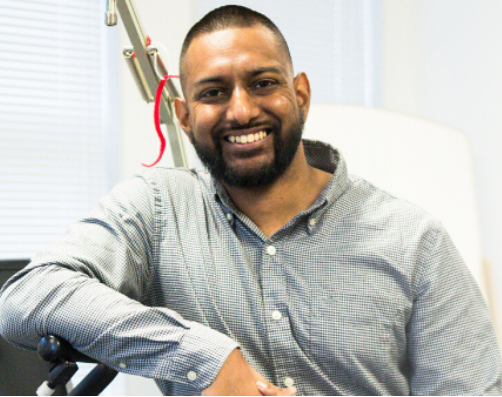
Andrew Ramsook
Researcher, Pulmonary Rehabilitation
The BC Lung Foundation awards several fellowship grants every year to support promising BC research and researchers. Andrew Ramsook was awarded a fellowship grant in 2018. Andrew received his Bachelor of Physical & Health Education in 2012 from the University of Toronto. Following this, Andrew completed his Master’s of Science Degree under the supervision of Dr. Jordan Guenette, Director and Principal Investigator of the UBC Cardiopulmonary Exercise Physiology Laboratory at St. Paul’s Hospital in Vancouver, where Andrew is currently a PhD Student.
What kind of differences exist between the sexes medically speaking?
Throughout the animal kingdom, males and females frequently exhibit recognizable differences that make it reasonably easy to tell them apart. In mammals, one of the most common sex-biased traits is size, with males typically being larger than females. This is true in humans: Men are, on average, taller than women.
Sex differences aren’t limited to physical traits however. They’re also common in disease. For example, there’s the fact women are much more likely to develop autoimmune diseases, while men are more likely to develop cardiovascular diseases. These differences have important implications for the treatment of illnesses. Yet, for many years, researchers tended to view men as the norm or the standard. These days’ scientists are paying more attention to the difference between the sexes.
What specific sex-differences are your researching?
Over the past 20 years, important differences have been noted between the male and female response to exercise. Understanding these differences is important as it could impact exercise prescription for disease prevention in healthy individuals, training strategies for competitive athletes, and the design of patient exercise rehabilitation programs.
The ‘gaps’ in knowledge I'm working to fill, relates to respiratory exercise physiology. Research so far suggests there are important differences, but the number of subjects studied to date has been woefully small.
I’m investigating sex-differences in terms of respiratory muscle fatigue. Our respiratory muscles are those that contribute to inhalation and exhalation, aiding in the expansion and contraction of the thoracic cavity – in short, the muscles that enable us to breathe. When the diaphragm (your main breathing muscle) fatigues, it can send signals across the entire body that lead to slowing down or stopping exercise altogether. This fatigue problem comes from two main paths: either the muscle itself can't contract as effectively, or your brain tells the muscle it can’t and so it won’t.
Ultimately how will your finding benefit patients?
Understanding how men and women experience diaphragm fatigue is crucial to our respiratory health and a focus of our research team here at the Cardiopulmonary Exercise Physiology Lab. Women tend to be more resistant to ‘muscle-based’ fatigue but we don’t know about the ‘brain-based’ or central diaphragm fatigue. I’m particularly interested in the latter; the connection between our brain’s ‘perception’ and how it affects the sensations of breathlessness, or dyspnoea, during exercise.
Ultimately, my colleagues and I at the UBC Cardiopulmonary Exercise Physiology Laboratory want to understand as much as they can in order optimize exercise therapies.
